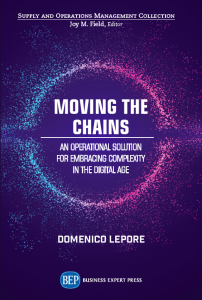
Continuing on from our post last week that included a “Quantum perspective”, one of our two very own physicists, Dr. Giovanni Siepe, writes today about physics and management and what leaders and managers need to know.
Physics has been considered for a long time a “reductionist discipline” dedicated to the understanding, description and interpretation of nature. This misconception has its foundations in ancient history, ever since the Greek Philosopher Democritus’ first attempt to describe nature in terms of its most fundamental elements: atoms.
Fortunately Science, and Physics as a very important part of it, progresses and continuously improves its ability to understand, describe and interpret nature. Over the last hundred years, the idea of understanding and describing nature only in terms of its basic components has been overcome.
This result has been achieved thanks to the remarkable work of great geniuses of science such as Nils Bohr (and his stimulating discussions and exchange of letters with Albert Einstein), Erwin Schrödinger, Werner Heisenberg and Paul Dirac, and more recently thanks to the work of David Bohm, Richard Feynman, John Wheeler and John Bell.
Ever since the first development of Quantum Theory it has been obvious that we cannot understand nature if we do not have a profound understanding of how its parts relate to each other and what their interactions are. The idea of “wholeness” is crucial if we want to have a complete understanding of the physical world.
Physics and management: understanding the whole organization
Dr. Edwards Deming was a physicist by education. We can safely assume that he had intrinsically and profoundly metabolized this idea. Organizations, he stated, cannot be understood, described and interpreted ONLY by studying the parts in detail.
We can understand how organizations work if we know both how the single parts (what are often called “functions”) work, AND how the parts relate to each other. In Dr. Deming’s words, to fully understand the behaviour of an organization we have to focus on interdependencies.
Nature is intrinsically systemic and Organizations, as part of nature, are intrinsically systemic as well. Deming’s well-known picture of “Production viewed as a System” is an extremely powerful representation of this idea. This is our rendering of it:

Unfortunately, this holistic view of the organization is still fairly “alien” to the majority of companies and its managers (even if the drawing of ‘Production viewed as a system’ is almost 70 years old). This remains true in spite of the fact that Deming is considered the father of the Quality Movement and a prominent figure in the field of Organizational Science.
I have personally been sharing these ideas in our training and advisory programmes for the past ten years. The major problem that we have faced, as often is the case, is the implementation of these ideas. For this reason, over the last 25 years Intelligent Management Inc. has worked on the development and validation of a methodology to allow these ideas to become reality.
The Decalogue methodology is a powerful synthesis of Deming’s systemic approach to managing organizations (focus on interdependencies) and Goldratt’s systemic approach to managing organizations (focus on the element that facilitates synchronization – the constraint).
The Network of Projects is an innovative organizational design that enables companies to manage interdependencies and synchronization correctly; it is the missing element that allows the implementation of these fundamental ideas.
Contact: intelligentmanagement@sechel.ws
SCHEDULE AN INTRODUCTORY CALL WITH US







Why holistic view of the organization is still fairly “alien” to the majority of companies and its managers when we all intuitively know the entire organization is one unitary structure? The reason is simple the organization has no heart and brain to keep it all together. My research has given rise to this autonomous scheduling engine core – the brain and heart – that not just ties the entire organization together but makes it live as it responds to external stimuli in real time.
Read about my research in a book titled “Future of manufacturing” that you can download from:
https://www.mediafire.com/file/2u93kvexo9qkojx/Future_of_Manufacturing_%2528A4_Size%2529.pdf/file
Contact me for a setup of the actual demo version that you may install on your computer.